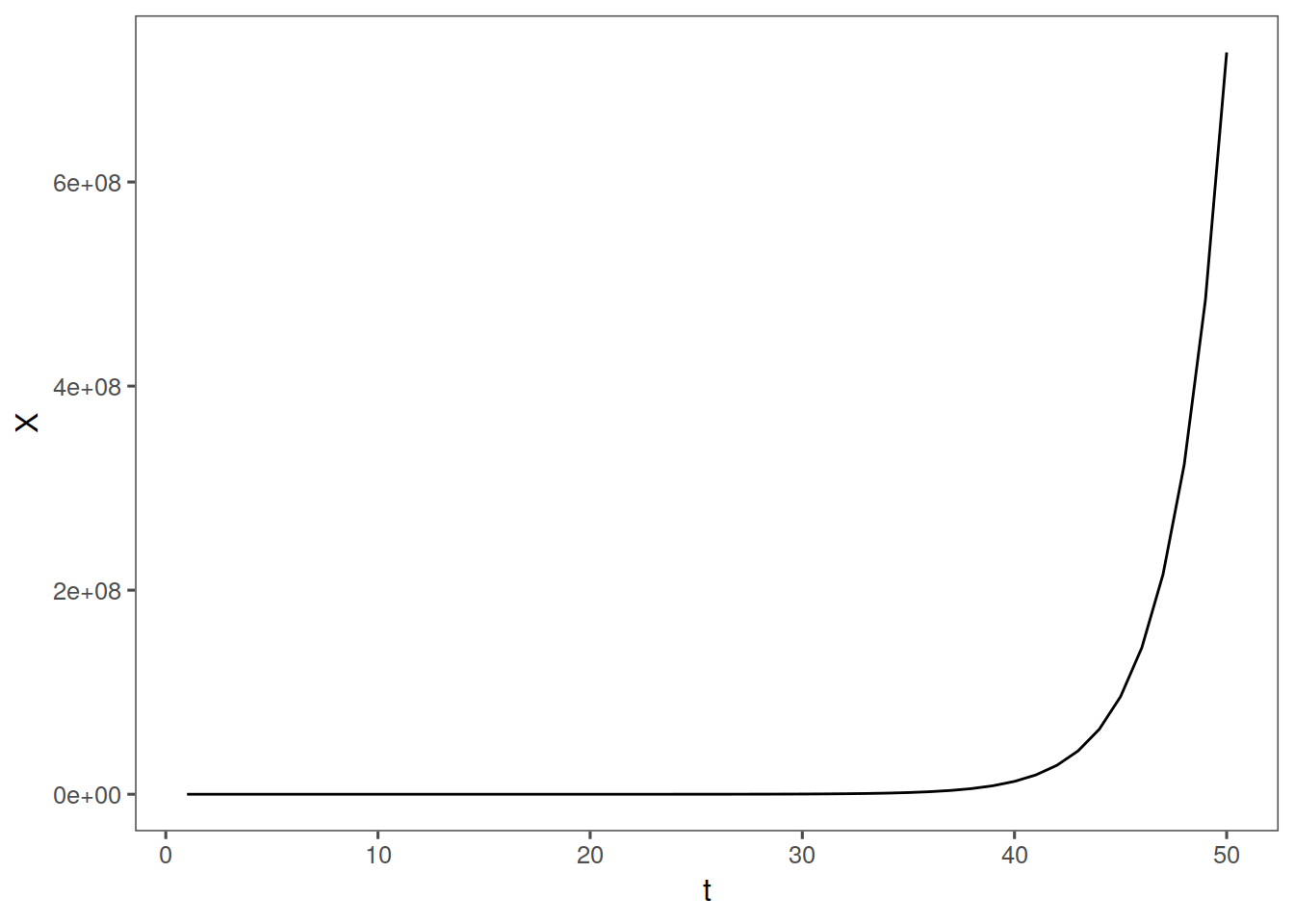Unit 10 GLPs
a GLP is a linear filter with a white noise input
We take white noise input and put it through a filter and get something that isnt white noise.
\[\sum_{j=0}^\infty \psi_j a_{t-j} = X_t - \mu\]
GLP’s are an infinite sum of white noise terms. This might be weird now but later on this concept will return.
The \(\psi_j\)’s are called psi weights, these will be useful again later. AR, MA, and ARMA are all special cases of GLP’s, and will be useful when we study confidence intervals.
10.1 AR(1) Intro
AR(p) in which p = 1
We will go through well known forms of the AR(1) model.
\[X_t = \beta + \phi_1 X_{t-1} + a_t\]
\[\beta = (1-\phi_1)\mu\]
Beta is moving average constant
We are saying that the vluse of x depends on some constant, the previous value of x, and some random white noise. Looks a lot like regression except there is a wierd variable
we can rewirte tis as
\[ X_t = (1-\phi_1)\mu + \phi_1 X_{t-1} + a_t \]
An are 1 process is stationary iff the magnitude of \(\phi_1\) is less than 1
We will deal with this a lot in the near future
10.1.1 AR(1) math zone
\[E\left[ X_t \right] = \mu ?\] \[E \left[ X_t \right] =E \left[ 1-\phi_1 \mu \right] + E \left[ \phi_1 X_{t-1} \right] + E[a_t]\]
We can rewrite this as \[E \left[ X_t \right] = 1-\phi_1 \mu + \phi_1E \left[ X_{t} \right] + 0\]
\[E \left[ X_t \right] ( 1-\phi_1) = 1-\phi_1 \mu \] \[E\left[ X_t \right] = \mu \]
Mean does not depend on T
The variance also does not, and if phi1 is less than one variance is finite
\[\sigma_X^2 = \frac{\sigma_a^2}{1-\phi_1^2}\]
and rhok is phi1 to the k
\[\rho_k = \phi_1^k, k \geq 0\]
Spectral Density of AR(1) also does not depend on time, it just monotonically increases or decreases depending on phi1:
\[S_X(f) = \frac{\sigma_a^2}{\sigma_X^2} \left( \frac{1}{\mid 1 - \phi_1 e^{-2\pi i f}\mid^2} \right)\]
10.1.2 the zero mean form of AR1
with zero mean, \[X_t = \phi_1 X_{t-1} + a_t\] OR \[X_t- \phi_1 X_{t-1}\]A
10.1.3 AR1 with positive phi
remember we have \[\rho_k = \phi_1^k\]
With positive \(\phi_1\), we have:
realizations are wandering and aperiodic
Autocorrelations are damped exponentials
Spectral density Peaks at zero.
Higher values = stronger versions of these characterstics
10.1.4 AR1 with negative phi
We have:
realization are oscillating
Autocorrelations are damped and alternating(negative to a power you fool)
Spectral density* has a peak at f = 0.5 (cycle length of 2)
Higher magnitude = stronger characteristics
10.1.5 Nonstationary
if phi = 1 or phi> 1, we have that realizations are from a nonstationary process. with it equal to one, it looks ok, and is actualy a special ARIMA model. WIth it > 1, we have crazy explosive realizations. Check this out:
nonstarma <- function(n, phi) {
x <- rep(0, n)
a <- rnorm(n)
x[1:n] <- 0
for (k in 2:n) {
x[k] = phi * x[k - 1] + a[k]
}
tplot(x)
}
nonstarma(n = 50, phi = 1.5) + th